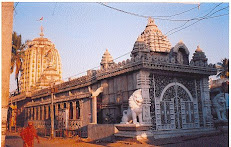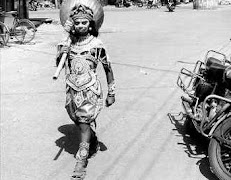BANKING IN BERHAMPUR AND ITS HISTORY
After a long gap I have decided to write about Berhampur and Ganjam and chosen the topic as Banking.
Few days back I have visited a restaurant in Kolkata in the Park Street namely “THE GRAND TRUNK ROUTE“. It was nicely painted with photos of Sher Shah Suri. Suddenly I remembered that Banking in India cannot be started without mentioning him. Sher Shah Suri took over Moughal Empire in 1540 and ruled up to 1545 due to death on accident. During his rule of 5 years he set up new civic and military administration, issued first Rupiya and revamped Postal System and revived the historical city of Pataliputra since 7th Century to Patna.
He extended “The Grand Trunk Road “Chittagong in the province of Bengal to Kabul passing through Kolkata and Delhi. All these things in a span of 5 years.
The Rupee is the common name in India, Pakistan, Indonesia, Maldives, Maturities, Nepal, Sri Lanka, Afghanistan, Tibet, Burma. British East Africa and German East Africa.
This is how the Rupee was born in India. Now coming to the history of Banking as is known now a days is it begins from 1839 with the establishment of Presidency Banks. (Mostly the information is from the study of Amiya Kumar Bagchi work). Thus the three Presidential Banks, Bank of Bengal, Bank of Bombay and Bank of Madras came into force between 1840 to 1843. Bank of Bengal has opened an agency in 1838 at Mirzapur and made it to a lone Branch in 1839 and amidst banking crisis closed in 1848.
These Presidency Banks were not interested in trade only facilitate British and big establishments. In 1861 the British Government made sweeping changes in Indian Monetary system. Until 1861, these Presidency Banks have the currency notes of their own. In 1861 the Government decided to print notes by themselves and took away the note issuance business from these Banks. Across British occupied India a uniform currency was issued. This led all these Presidency Banks to open Branches and to start so called retail banking in a limited way.
Despite early start in the year 1861 these Presidency Banks by 1916 just have 63 (Branches. Bank of Bengal – 25, Bank of Bombay – 14 and Bank of Madras – 24}, Serous attempts were made increase the number of Branches since they are in main towns and in 1921 these three presidency banks were merged and amalgamated to Imperial Bank Of India on 27th January 1921 and was given a target to open 100 Branches in a span of five years.. In those days it was a hurricane task. Later on 1st July 1955 by means of an Act it became STATE BANK OF INDIA.
Now coming to Odisha and Berhampur, consequent up on the order to open 100 Branches, Madras Presidency Bank on 16th May 1921 opened the first Bank in the state. THUS BERHAMPUR BECAME THE FIRST TO HAVE A BANK IN ODISHA and the very next day Bhubaneswar Branch was opened by Bengal Presidency.
This is chapter for commercial Banks entrance to Berhampur, but banking is not new to people of Berhampur. By that time cooperative Banks already existent,
COOPERATIVE BANKS MOVEMENT AND BERHAMPUR:-
This how a Branch of a commercial Bank has made an entry into Berhampur and Odisha. Whereas, the story of entry of Cooperative Banks in Berhampur is entirely different. The eminent people of the town at that time are responsible.
Cooperatives started as small grass root level organizations in the last century in Western Europe, North America and Japan. However it is Rockdale Equitable Society in England is considered to be pioneer of the cooperative movement. In 1844 a group of 28 artisans of cotton mills in the North England formed the society .At that time the cotton growers were having a miserable life and could not provide food and take care of medicines of their family. As usual the Banks used to offer assistance rich and affluent people .They pooled their scare resources and finance still needy. They first operated through retail shops once in two days of a week and later five days a week .Thus they enrolled every customer as a member and within three months they could run the society very well.
The history of cooperatives in India is more than hundred years old. In olden days non-istitutiuional agencies such as money lenders used to finance farmers at exorbitant rate of interest, the situation was such the formers have to sell their land to repay loans. In some parts of the country particularly Poona and Ahmednagar the formers spearheaded agitations against the money lenders. As result of which the Government has passed Deccan Agricultural Relief Act (1879), Land Improvement Loan Act (1883) and The Agricultural Loan Act (1884).
During 1892 Madras Government has appointed Fedrick Nicholson to study village cooperatives in the line of existing ones in Germany and he has submitted his report in 1895 and in 1897.The Famine Commission in 1901 strongly recommended that Agriculturalists should be granted loans to prevent recurrences of similar conditions in future. As a result of these studies and reports in 1904 the Cooperative Societies Act was passed.
While this is the history of Cooperative Societies of India, our Berhampur was no way inferior simultaneously eminent persons worked out their ways to solve the problems of agriculturalists and urban poor. As a result of which during 1906 The DCCB Bank Ltd (NOW KNOWN AS BCC BANK LTD AND BERHAMPUR COOPERATIVE URBAN BANK LTD WERE FORMED).
The DCCB Bank ltd was initially under Madras Presidency and was serving present Ganjam, Gajapati, Rayagada and Srikakulam districts. Revered persons like G.Raghava Rao, G>Ganapati Iyer (Principal Khallikote College}, P.Venkateswarlu (noted Lawyer}, Rao Sahib W,V,B.Ramalingam (Contractor} have nurtured during the initial stages from 1915 to 1934. Later Nabhi Ramakrishna Rao a dedicated cooperator had worked from 1934 to 1936 as Secretary and later as President from 1948 to 1970.
The Berhampur Cooperative Urban Bank ltd was also opened on 13th November 1906 to cater to the needs of urban poor with area of operation as Berhampur. It is familiarly known as Urban Bank. While I am not aware of the eminent people involved initially in opening it. One renowned person named Ambatipudi Simhachalam a lawyer and eminent personality of 1920 and 1930 with Mocharla Sitaramayya and Yerramalli Sririm Murty garu as his juniors was the President of the Bank, he was Madras High Court Lawyer.
It has developed immensely during the period when W.V.V.B.Ramalingam (Freedom Fighter) was its President. Later he also worked as Adviser to State Government on cooperatives during the period when Biswanath Das was the 1st Prime Minister of Orissa State (in those days the state head was known as Prime Minister). The present crimson red building was constructed during his regime. This was mentioned a while Bank celebrated its 100 years of existence.
This is how the Banking in Berhampur made a beginning, way back 1906.
- About the Author-
----------------------------
(The writer was born in 1946 at Berhampur, studied at KC High School near Khallikote College and later migrated to Gusainuagaon as KC Higher Secondary School., later studied at Khallikote College and obtained degree in 1968 from Berhampur University.
I joined State Bank of India as Clerk-Typist in 1970 at Berhampur and left Berhampur in 1979 on transfer. Again I came to Berhampur and worked as Field Officer and also Branch Manager at SBI, Aska Road Branch of Berhampur during 1988 to 2001. I served in places like Surada, Koraput, Sunabeda. Sundargarh, Barpali and Bubanesweaw. Finally retired in 2006. Since 2011 I am staying out side Odisha.)








































.jpg)

















































